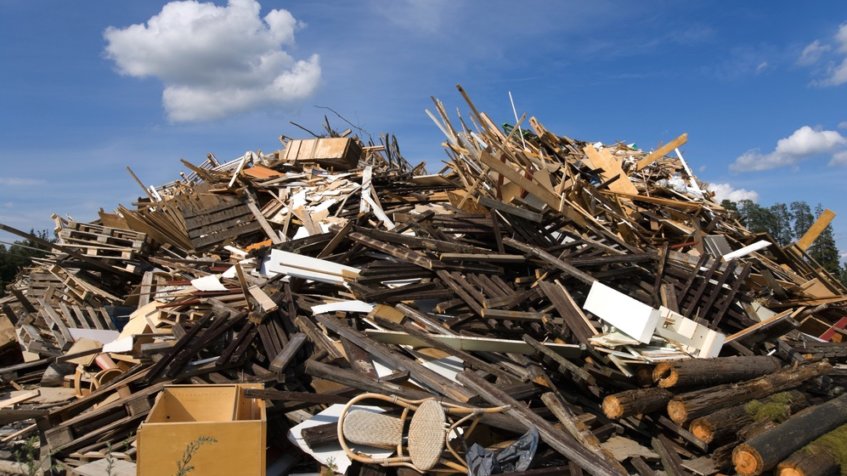As the UK looks to reduce its carbon footprint, how it disposes of its wood will play a key role in hitting sustainability targets.
The Paris climate deal reached last December saw a commitment from all countries to cut emissions and limit the rise in global temperature to less than 2C.
It is estimated that the UK generates around 4.5 million tonnes of waste wood per year. In the mid-nineties, less than a quarter of that was recycled and by 2011 the figure had risen to 60% – almost 2.8 million tonnes. This amount is expected to increase further as the number of wood recycling companies grows.
According to a study by the Waste & Resources Action Programme (WRAP), some of the largest sources of waste wood come from three areas:
Municipal waste: This consists of disposed items such as furniture, packaging and DIY waste from households.
Industrial and commercial waste: Waste wood from this area comes from manufacturers of wood products and construction materials.
Construction and demolition waste: This is made up of surplus structural timber unable to be used, wood packaging for construction materials, etc from the Construction industry; torn down structural wood or unwanted furniture from the demolition industry.
Despite efforts to recycle wood effectively, there is still a significant amount that ends up landfills across the UK every year. This is both expensive and not environmentally sustainable.
The demand for timber across the world shows no signs of slowing down and has led to a number of environmental concerns including deforestation, soil erosion, negative impact of wildlife and an increase in green house gasses.
Clearly if more waste wood was recycled then these problems can be abated.
In recent years, the range of uses for recycled wood has expanded to include landscaping products, equine surfaces and animal and poultry bedding.
Recycled wood has lower moisture content (around 20%) than virgin wood (60% to 70%) creating more durability.
So consumers will get the same weight of wood but pay for less moisture when it comes to recycled wood.
Improvements in technology have led to greater efficiency in the recycling process. Modern machinery can cope with greater quantities of waste wood and the automation and improvement in quality of the process to remove contaminants such and nails and screws from waste wood means a higher quality of recycled wood can be produced.
Biomass fuel has also provided a new market for recycled wood chip and provides a drier alternative to sawmill chips.
When it comes to processing wood waste, the BSI PAS 111 was commissioned by WRAP in collaboration with the British Standards Institution (BSI) and extensive consultation with the wood recycling industry.
PAS 111 seeks to give a specification for individuals and organisations recovering and processing post-industrial and post-consumer waste wood into wood products such that potential customers will be assured that they are procuring a material of consistent and verifiable quality.
If the minimum specification is met or exceeded then the material is PAS 111 compliant; if the minimum requirements are not met, then the material is noncompliant, even if an end user’s specification is met.
Sectors that make up the majority of recovered wood consumed in the UK and covered by PAS 111 include panel board manufacturing; biomass energy generation; animal bedding; mulches; equine surfaces; pathways and coverings; and Industrial and commercial applications.
It seems certain that the increase in demand for sustainability and the lowering of carbon footprints will mean the wood recycling industry will see continued growth in the years ahead.

































